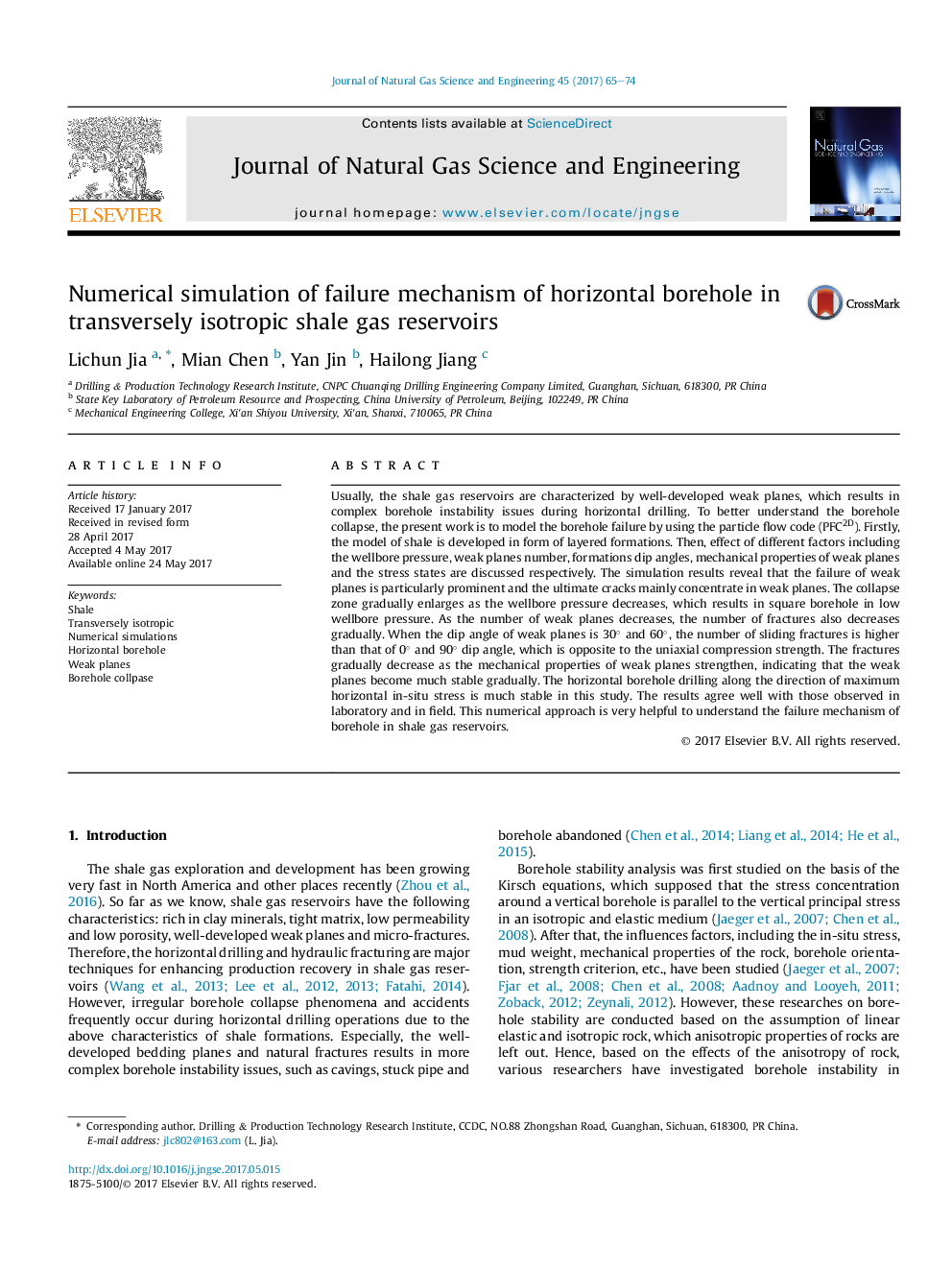| Article ID | Journal | Published Year | Pages | File Type |
|---|---|---|---|---|
| 5485007 | Journal of Natural Gas Science and Engineering | 2017 | 10 Pages |
Abstract
Usually, the shale gas reservoirs are characterized by well-developed weak planes, which results in complex borehole instability issues during horizontal drilling. To better understand the borehole collapse, the present work is to model the borehole failure by using the particle flow code (PFC2D). Firstly, the model of shale is developed in form of layered formations. Then, effect of different factors including the wellbore pressure, weak planes number, formations dip angles, mechanical properties of weak planes and the stress states are discussed respectively. The simulation results reveal that the failure of weak planes is particularly prominent and the ultimate cracks mainly concentrate in weak planes. The collapse zone gradually enlarges as the wellbore pressure decreases, which results in square borehole in low wellbore pressure. As the number of weak planes decreases, the number of fractures also decreases gradually. When the dip angle of weak planes is 30° and 60°, the number of sliding fractures is higher than that of 0° and 90° dip angle, which is opposite to the uniaxial compression strength. The fractures gradually decrease as the mechanical properties of weak planes strengthen, indicating that the weak planes become much stable gradually. The horizontal borehole drilling along the direction of maximum horizontal in-situ stress is much stable in this study. The results agree well with those observed in laboratory and in field. This numerical approach is very helpful to understand the failure mechanism of borehole in shale gas reservoirs.
Related Topics
Physical Sciences and Engineering
Earth and Planetary Sciences
Earth and Planetary Sciences (General)
Authors
Lichun Jia, Mian Chen, Yan Jin, Hailong Jiang,
